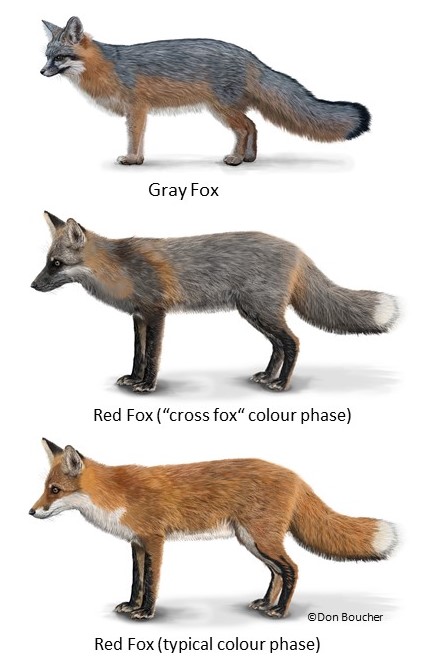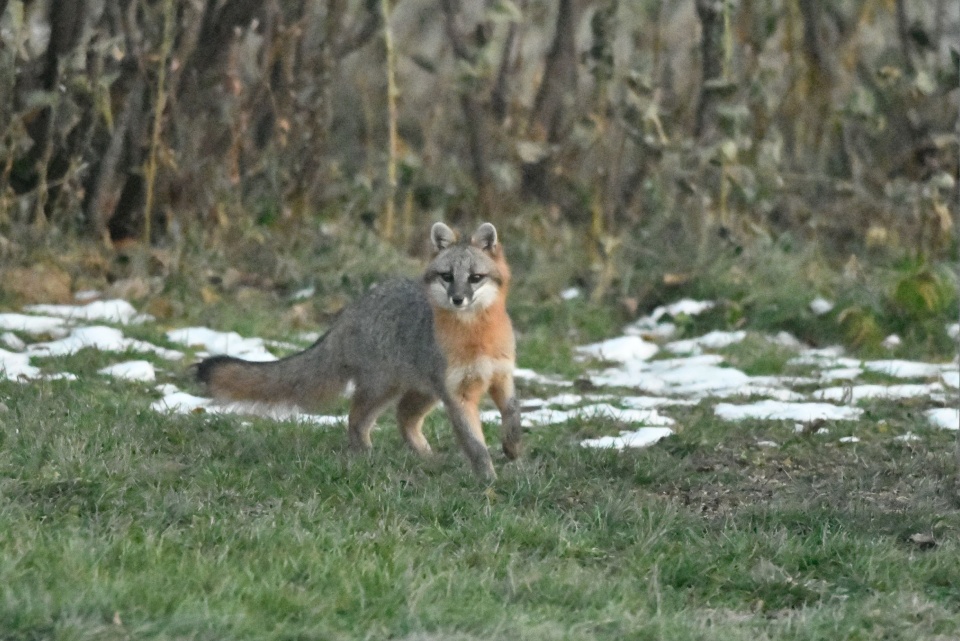Gray Fox Project

Many of us have never heard of a Gray Fox (Uroycon cinereoargenteus), never mind laid eyes on one. Not surprising, since this little known, distant relative of the Red Fox (Vulpes vulpes) is primarily active at night and much rarer. In fact, the Gray Fox is a species at risk that is considered Threatened both in Ontario and Canada-wide. Formerly more widespread, provincial populations are currently known from Pelee Island and northwestern Ontario, where the species is at the northern edge of its range.
There have been increasing numbers of Gray Foxes reported in the Thunder Bay area of late especially in 2020, including some that suggest they may recently have established a small breeding population (rather than just visitors from Minnesota). Gray Foxes typically prefer deciduous and mixedwood forests, often with clearings and streams. They can climb trees with ease, feeding on berries, fruit, and small animals. Many of the recent local reports have been around the outskirts of the city, but they have been known to follow forested corridors and rivers deeper into urban areas.
It can be difficult to tell a Gray Fox from a Red Fox, especially at night when colour is less reliable. In particular, the “cross fox” phase of the Red Fox is almost a dead ringer for Gray Fox colouration (see illustration). However, the Gray Fox is slightly smaller, with shorter legs, a shorter muzzle, and a longer tail (to better help balance while climbing trees). A key distinguishing feature is that the tip of the tail in a Gray Fox is always black (and often shows black along on top), whereas it is white on a Red Fox, regardless of the colour phases.
The Thunder Bay Field Naturalists are interested in learning more about our poorly known Gray Fox neighbours and would like your help in monitoring them. We encourage residents to become “citizen scientists” by keeping an eye out for Gray Foxes near your bird feeders, especially at dawn, dusk, and after dark. We hope that those who have trail cameras will consider placing a camera near their bird feeders (especially if using sunflower seeds or suet) or at other suitable spots on your property such as along game trails. We would appreciate hearing of your Gray Fox sightings (with photographs if possible). Email thunderbaygrayfox@gmail.com. This information will help us to better monitor the status of this species in our area and guide conservation efforts. We will periodically share the results with the broader community, while safeguarding confidential or sensitive information.

